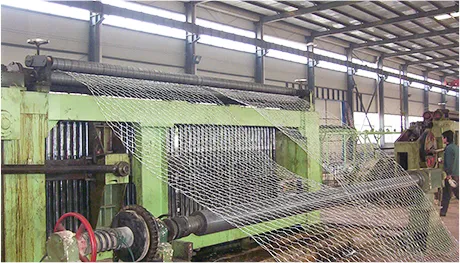-
 Phone:
Phone: -
 Email:
Email:

rockfall net
The Importance of Rockfall Nets in Environmental Management
Rockfall is a natural geological hazard that poses a significant risk to infrastructure, ecosystems, and human life. It occurs when rocks or boulders dislodge from a hillside or cliff and tumble down due to gravity, often triggered by factors such as weathering, earthquakes, or human activity. As the frequency and intensity of rockfall incidents increase due to climate change and urban expansion, the need for reliable protective measures has become more pressing. One of the most effective solutions for mitigating rockfall hazards is the installation of rockfall nets.
Rockfall nets are specialized structures designed to capture or redirect falling rocks before they can cause damage. They are typically made from high-strength steel cables and mesh, which are anchored to the ground or bedrock. These nets absorb the energy of falling rocks and provide a protective barrier for roads, railways, buildings, and other critical infrastructure located at the base of cliffs or steep slopes. The strategic placement of rockfall nets not only protects human communities and their assets but also preserves the environment by minimizing disturbances and maintaining the integrity of natural landscapes.
The effectiveness of rockfall nets hinges on thoughtful engineering and installation. Engineers conduct detailed site assessments to understand the geology and dynamics of potential rockfall events. They analyze factors such as slope angles, rock types, and historical rockfall activity. This information helps in designing nets that are appropriately sized and positioned to effectively intercept falling debris. Various types of nets are available, including flexible and rigid systems, each tailored to meet the specific needs of the environment and the scale of potential rockfall events.
rockfall net

Beyond their immediate protective functions, rockfall nets also contribute to long-term sustainability efforts. By preventing rockfalls, these structures can reduce the need for extensive road repairs and reconstruction, thereby minimizing environmental disruption and resource consumption. They also help maintain the aesthetic and ecological value of mountainous regions, allowing for continued enjoyment and usage by local communities and tourists alike.
Moreover, rockfall nets are not only employed in mountainous regions but can also be adapted for various environments, including urban settings. As cities continue to expand into previously undeveloped areas, the risk of encountering rocky terrains increases. In such instances, rockfall nets can be integrated into urban planning efforts to safeguard public spaces and transportation networks while preserving natural features.
In addition to engineering aspects, community education about rockfall hazards and the benefits of rockfall nets plays a vital role in promoting safety. Awareness programs can inform residents about the risks associated with living near steep slopes and the protective measures in place. This creates a culture of preparedness and resilience against natural hazards.
In conclusion, rockfall nets serve as a crucial component in the field of environmental management and disaster risk reduction. They provide an effective means of safeguarding infrastructure and communities from the dangers of rockfalls while promoting sustainable practices. As our understanding of geological hazards evolves, the integration of innovative solutions like rockfall nets will play an increasingly vital role in creating safer and more resilient environments for future generations. Through careful engineering, community involvement, and ongoing research, we can continue to mitigate the impacts of rockfalls and enhance the safety and stability of our landscapes.
-
Wire Mesh for Every Need: A Practical SolutionNewsJul.25,2025
-
Steel Fences: Durable, Secure, and Stylish OptionsNewsJul.25,2025
-
Roll Top Fencing: A Smart Solution for Safety and SecurityNewsJul.25,2025
-
Cattle Farm Fencing Solutions for Maximum SecurityNewsJul.25,2025
-
Affordable Iron Binding Wire SolutionsNewsJul.25,2025
-
Affordable Galvanized Wire SolutionsNewsJul.25,2025
-
Wire Hanger Recycling IdeasNewsJul.25,2025








